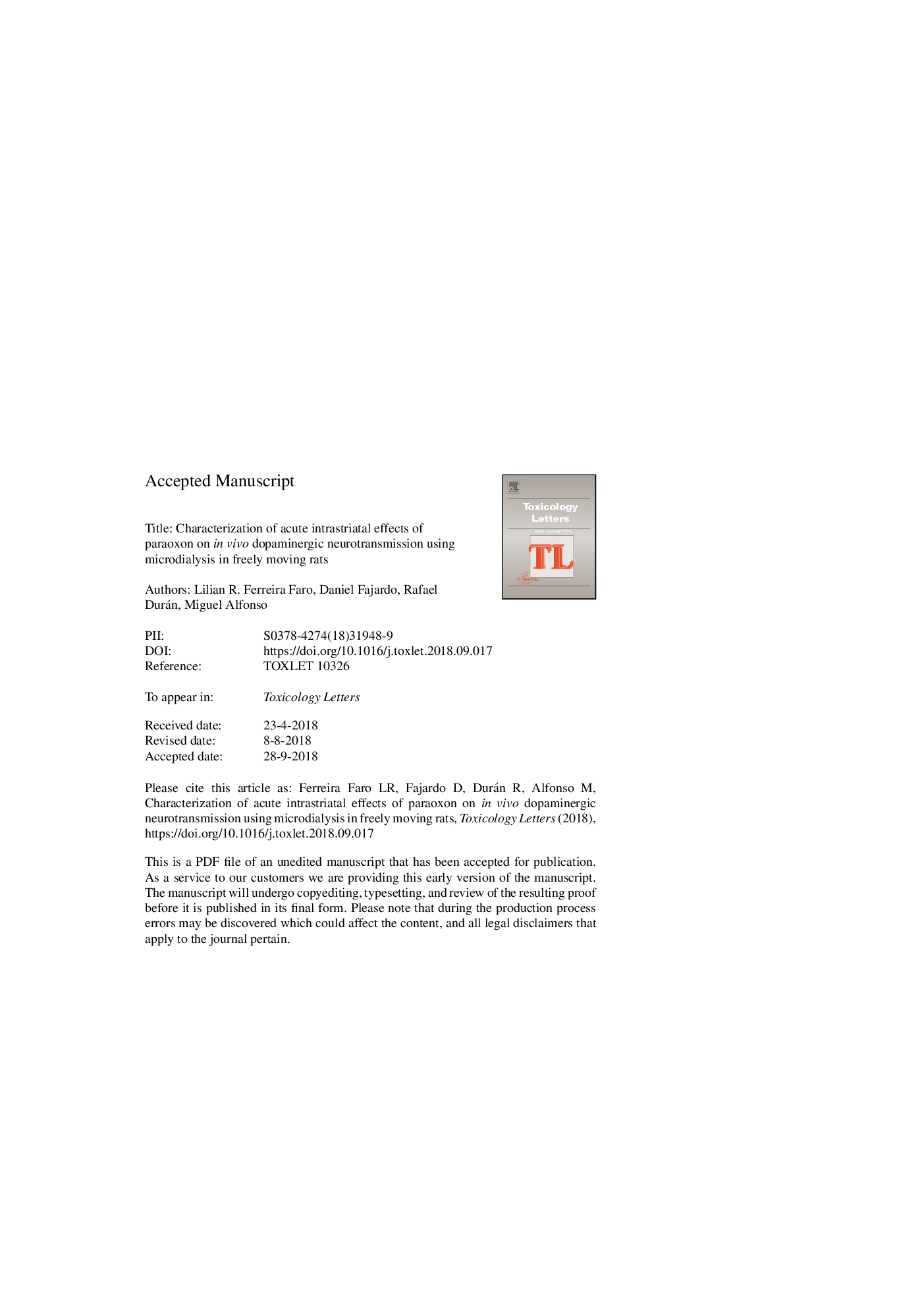| Article ID | Journal | Published Year | Pages | File Type |
|---|---|---|---|---|
| 11025670 | Toxicology Letters | 2018 | 16 Pages |
Abstract
Paraoxon (POX) is an extremely neurotoxic organophosphorous compound (OP) which main toxic mechanism is the irreversible inhibition of cholinesterase. Although the cholinergic system has always been linked as responsible for its acute effects, experimental studies have suggested that the dopaminergic system also may be a potential target for OPs. Based on this, in this study, the acute intrastriatal effects of POX on dopaminergic neurotransmission were characterized in vivo using brain microdialysis in freely moving rats. In situ administration of POX (5, 25 and 50ânmol, 60âmin) significantly increased the striatal dopamine overflow (to 435â±â79%, 1066â±â120%, and 1861â±â332%, respectively), whereas a lower concentration (0.5ânmol) did not affect dopamine levels. Administration of POX (25ânmol) to atropine (15ânmol) pretreated animals, produced an increase in dopamine overflow that was â¼63% smaller than those observed in animals not pretreated. Administration of POX (25ânmol) to mecamylamine (35ânmol) pretreated animals did not significantly affect the POX-induced dopamine release. Our results suggest that acute administration of POX increases the dopamine release in a concentration-dependent way, being this release dependent on acetylcholinesterase inhibition and mediated predominantly by the activation of striatal muscarinic receptors, once the muscarinic antagonist atropine partially blocks the POX-induced dopamine release.
Related Topics
Life Sciences
Environmental Science
Health, Toxicology and Mutagenesis
Authors
Lilian R.F. Faro, Daniel Fajardo, Rafael Durán, Miguel Alfonso,
